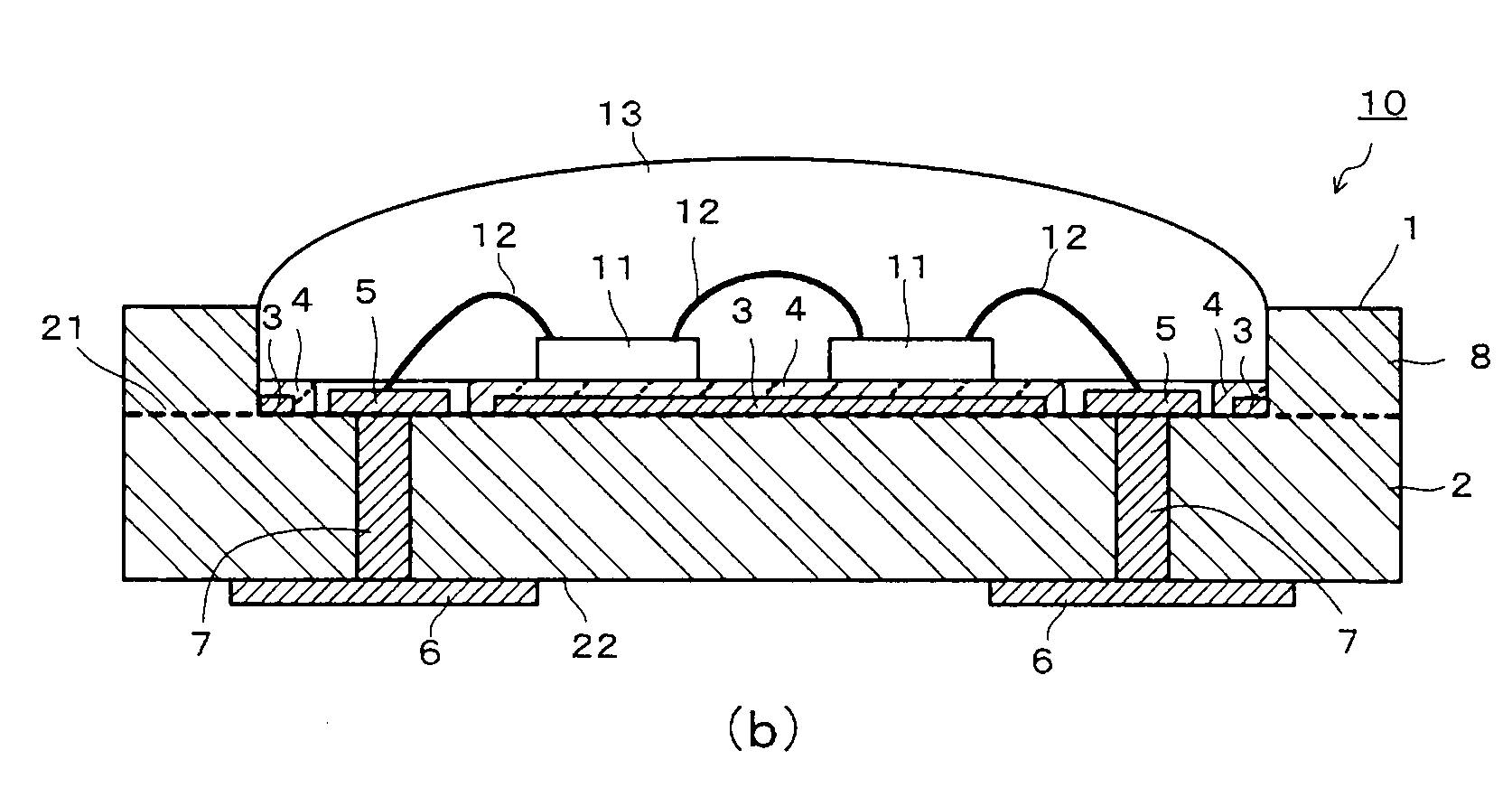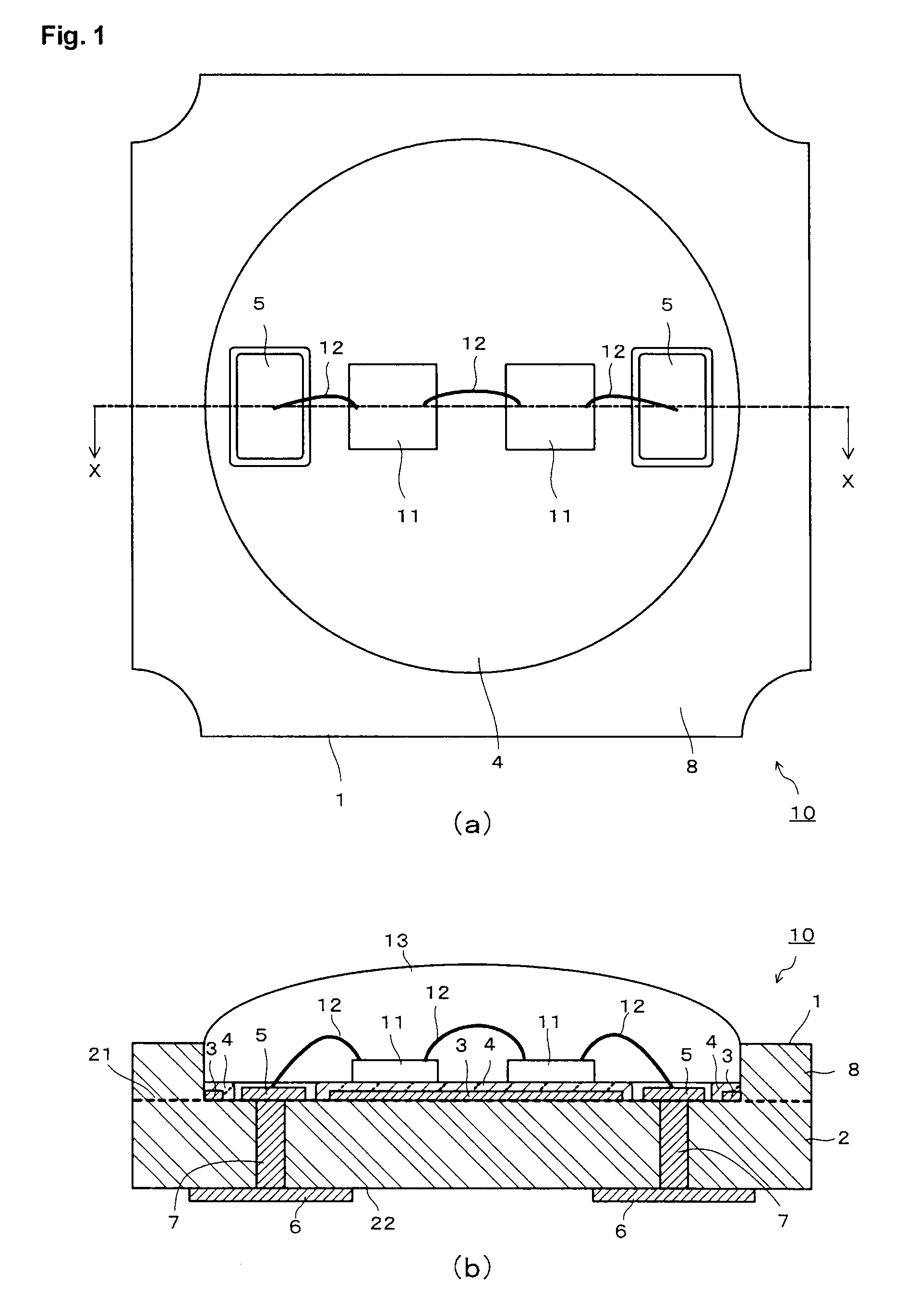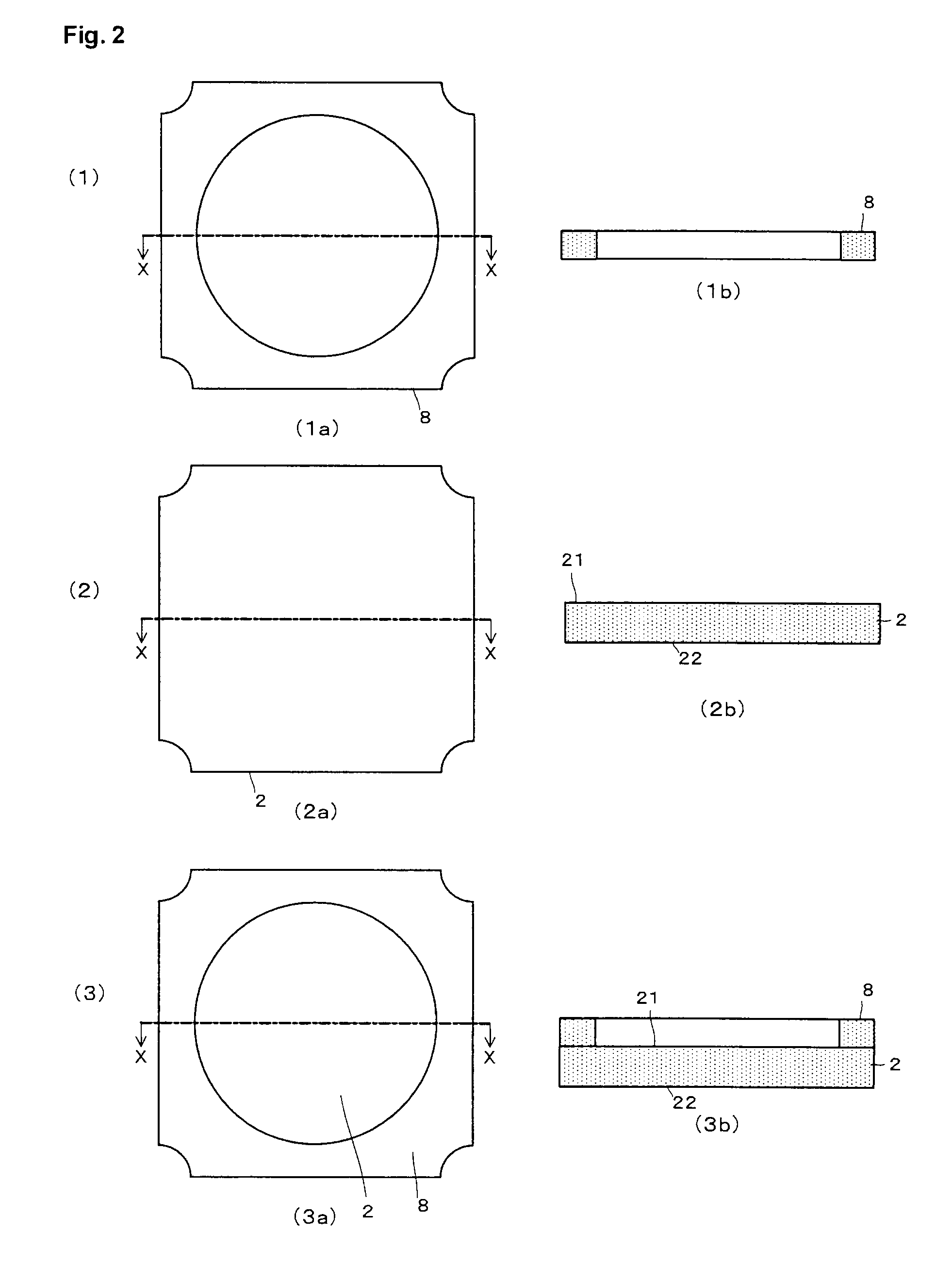Substrate for light-emitting element and light-emitting device
a technology of light-emitting elements and substrates, which is applied in the direction of solid-state devices, printed circuit aspects, circuit thermal arrangements, etc., can solve the problems of insufficient emission brightness, high cost of raw materials, and insufficient thermal conductivity of alumina substrates, so as to achieve sufficient heat generation of light-emitting elements, sufficient emission brightness, and sufficient heat dissipation properties
- Summary
- Abstract
- Description
- Claims
- Application Information
AI Technical Summary
Benefits of technology
Problems solved by technology
Method used
Image
Examples
first embodiment
[0032]FIG. 1 is a plan view (a) illustrating an example of the substrate 1 for light-emitting element according to the first embodiment of the present invention and the light-emitting device 10 employing it, and a cross-sectional view (b) along its X-X line.
[0033]On the substrate 1 for light-emitting element of the present invention, for example, as shown in FIG. 1, two light-emitting elements 11 are mounted so that they are electrically connected in series. This substrate 1 for light-emitting element is used for a light-emitting device 10 wherein light-emitting elements 11 are electrically connected in series by bonding wires 12, and a sealing layer 13 is provided to cover these light-emitting elements 11 and the bonding wires 12. That is, in the light-emitting device 10 shown in FIG. 1, the portion excluding the light-emitting elements 11, the bonding wires 12 and the sealing layer 13, is the substrate 1 for light-emitting element of the present invention.
[0034]Here, the first emb...
second embodiment
[0095]Now, a second embodiment of the present invention will be described wherein as an insulating protective layer, a layer of a sintered product of a second glass ceramics composition comprising a glass powder and a ceramics filler is used.
[0096]FIG. 4 is a plan view (a) illustrating an example of the substrate 1 for light-emitting element according to the second embodiment of the present invention and the light-emitting device 10 employing it, and a cross-sectional view (b) along its X-X line.
[0097]The substrate 1 for light-emitting element of the present invention is one wherein, for example, as shown in FIG. 4, two light-emitting elements 11 are to be mounted so that they are electrically connected in series. This substrate 1 for light-emitting element is used as a light-emitting device 10 wherein light-emitting elements 11 are electrically connected in series by bonding wires 12, and a sealing layer 13 is provided to cover such light-emitting elements 11 and bonding wires 12. ...
example 1
[0138]By the following process, a light-emitting device for test having the same construction as shown in FIG. 4 was prepared. Here, in the same manner as above, the same symbols are used for the components before and after the firing.
[0139]Firstly, a green sheet 2 for main body to prepare the substrate main body 2 of the substrate 1 for light-emitting element, a green sheet 4 for insulating protective layer and a green sheet 8 for frame member were prepared. For each green sheet, raw materials were blended and mixed so that SiO2 became 60.4 mol %, B2O3 15.6 mol %, Al2O3 6 mol %, CaO 15 mol %, K2O 1 mol % and Na2O 2 mol %, and this raw material mixture was put into a platinum crucible and melted at 1,600° C. for 60 minutes. Then, this molten state glass was cast and cooled. This glass was ground by a ball mill made of alumina for 40 hours to obtain a glass powder for the substrate main body. Here, ethyl alcohol was used as the solvent at the time of grinding.
[0140]40 mass % of this ...
PUM
 Login to View More
Login to View More Abstract
Description
Claims
Application Information
 Login to View More
Login to View More - R&D
- Intellectual Property
- Life Sciences
- Materials
- Tech Scout
- Unparalleled Data Quality
- Higher Quality Content
- 60% Fewer Hallucinations
Browse by: Latest US Patents, China's latest patents, Technical Efficacy Thesaurus, Application Domain, Technology Topic, Popular Technical Reports.
© 2025 PatSnap. All rights reserved.Legal|Privacy policy|Modern Slavery Act Transparency Statement|Sitemap|About US| Contact US: help@patsnap.com



